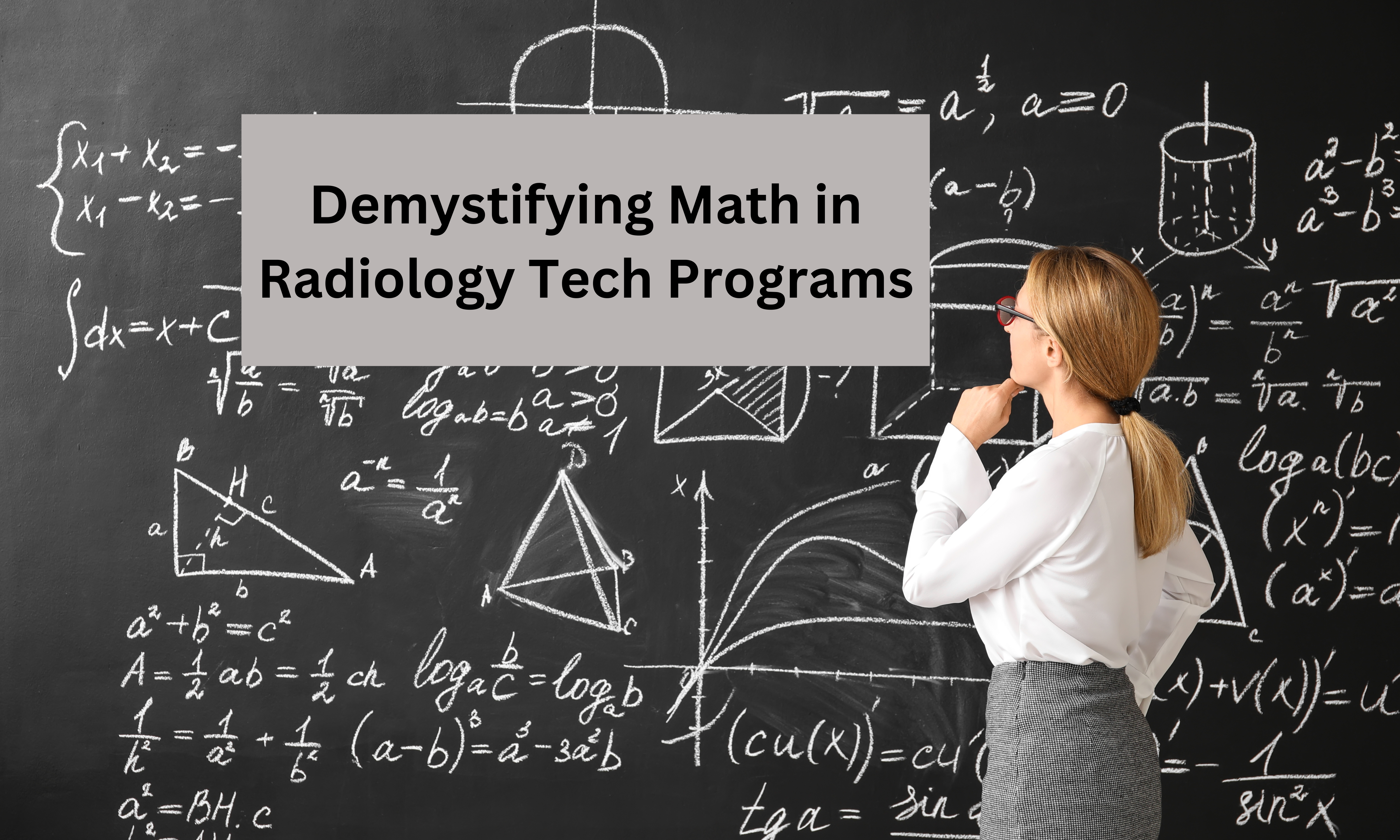Radiology is a fascinating field that offers incredible insights into the human body. However, many potential students are deterred by the notion that pursuing a career in Radiology requires advanced math skills.
If you’re wondering how deep you’ll need to dive into mathematical equations and concepts, this blog post is here to clear the waters.
How Intense Is the Math?
Firstly, it’s essential to understand that math features in radiology tech programs are not as daunting as one might assume. Many students who once claimed to be “horrible at math” have found the amount of math in the rad tech program manageable. In many tests, you can expect as few as five math problems.
The Nature of Math in Radiology
The type of math is mainly basic algebra – akin to what one might encounter around the 7th grade. But, more than math, understanding physics concepts is crucial in radiology.
For example, you might need to repeatedly use several formulas based on laws. But these are mostly about comprehending physics principles. One might often come across scenarios where it’s more about understanding the physics and anatomy concepts.
Moreover, Using that knowledge to construct equations considering the variables. This might involve adjusting diagnostic techniques based on the patient or equipment.
Comparing Radiology to Respiratory Programs
While both Radiology and Respiratory programs require some math, the nature and intensity can differ. Radiology techs don’t perform daily measurements with math like those setting up ventilators in respiratory programs. Instead, radiology has formulas focusing on aspects like determining dose per distance.
In practice, many of these calculations become second nature and are done swiftly. For instance, determining the dose and intensity when placing a grid on a receptor can become a quick decision once one gains experience.
Practical Application of Math in Radiology
Radiologists might need to adjust their techniques in real-world scenarios based on the patient’s situation. For example, if the imaging equipment’s tube is moved 72” from the patient, one might need to double the mAs from the 40” settings.
It’s about understanding the relationship between dose, distance, and other variables. This practical application can often be more intuitive than theoretical.

Choosing the Right Path
If you’re torn between pursuing Radiology or another medical field, aligning your choice with your passion is essential. One way to make an informed decision is by shadowing professionals in both fields. This will provide a more transparent picture of the day-to-day tasks and help determine which path resonates more with your interests.
In conclusion, while math is undoubtedly a part of radiology tech programs, it shouldn’t be the sole determinant of your career choice. With resources like tutoring, online videos, and support from peers and teachers, tackling the mathematical aspect of the course is feasible.
What’s more critical is your passion and interest in the field. So, don’t be deterred by the math; instead, focus on the incredible opportunities a career in radiology can offer!


